Technology
Compmillennia benefits from long-term relationships with leading engineering & design firms, materials suppliers and other builders. This enables the reach and capability of a large corporation, but at a small company overhead.
Compmillennia has a legacy of using new technology and developing innovations to harness it that later become widespread:
- World’s longest carbon fiber mast (177-ft) in 1992 made from prepreg, straightened under tension to reduce fiber waviness and cured using an in-house computer control system maintaining 150°F within ± 3°F across the part.
- Minimized custom mold cost for 60 mph motoryacht by using composite panels.
- Used vacuum bagging since 1970s and types of modified infusion since 1980s.
- Closed-mold construction for Egret hatches and other interior parts to reduce weight and improve fit & finish.
- Researched and adopted composite bulkhead-to-metal deck joint for 463’ megayacht superstructure, first to be DNV certified.
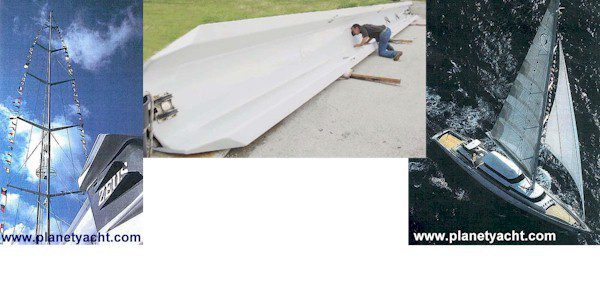
Large Prepreg Structures
In 1992, Jim Gardiner and team built the world’s longest carbon fiber mast (177-ft) for the sailing yacht Zeus. An ex-NASA engineer helped develop the in-house computer control system used to cure the carbon fiber/epoxy prepreg, maintaining 150°F within ± 3°F across the mast length.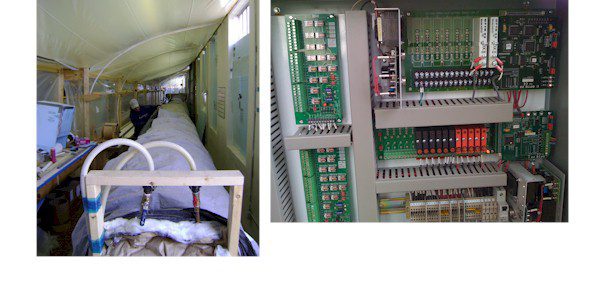
Digital Cure Management
In 2008-2009, Compmillennia produced 3,000 ft of carbon fiber/epoxy prepreg beams (50- to 115-ft long) for the 463-ft megayacht Swift 141 (now named Yas) using a computer-managed controller wired to thermistor temperature sensors and heating elements.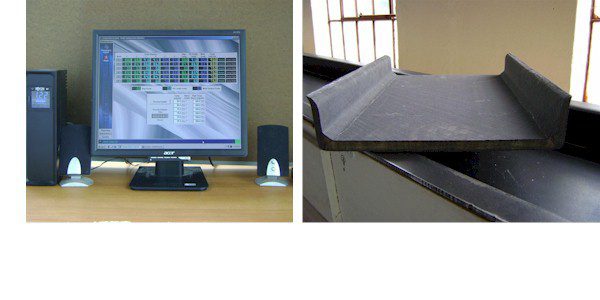
Cure Controller
The heated tooling was divided into six 20-ft zones, with six thermistors each, which allowed a quick visual scan of the computer during cure to ensure temperatures were within set limits during the 24-hr cure cycle.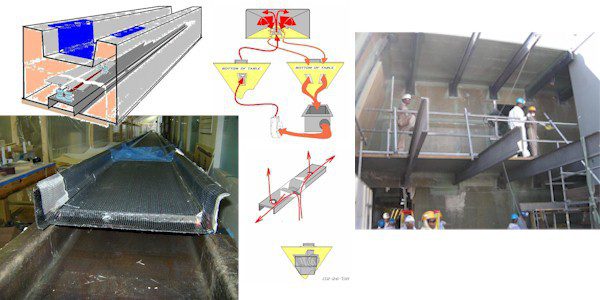
Heated Tooling
For the Swift 141 project, Compmillennia designed both the heated tooling and the computer control system which managed cure of the carbon fiber prepreg/foam cored beams which serve as the main structural girders for the megayacht’s top 3 decks.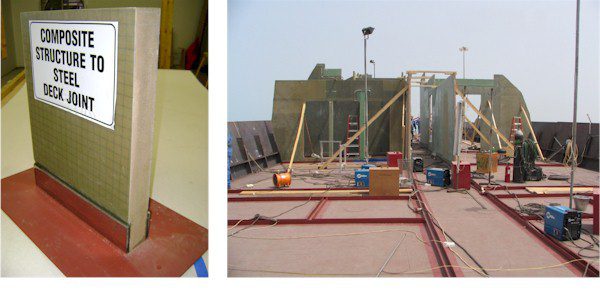
Composite-to-metal Structural Joint
Compmillennia researched and adopted the composite bulkhead-to-metal deck joint for the Swift 141 project, necessary to attach the composite superstructure to the previous Dutch frigate’s steel deck. This join system is the first to win DNV certification for non-military vessels.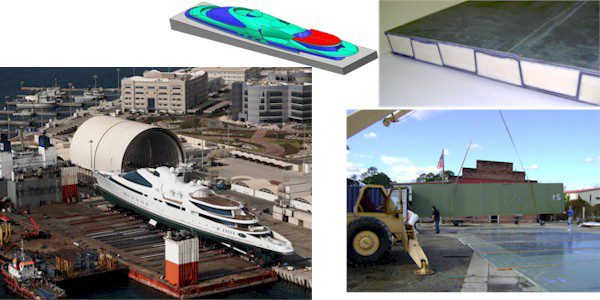
Trapezoidal Shear Webs
The Swift 141’s helideck center panels required double-bias carbon fabric skins connected by trapezoidal carbon shear webs through the Divinycell foam core to resist helicopter landing loads.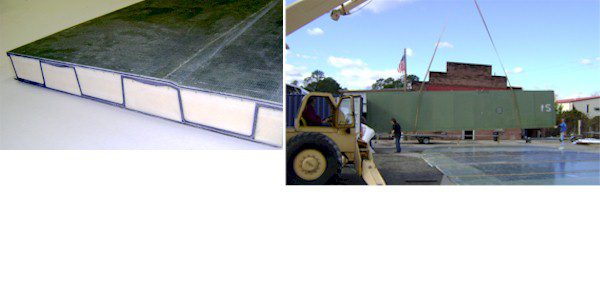
Trapezoidal Shear Webs 2
Compmillennia's challenge: to nest the core and 8-plies of carbon fabric in the shear webs without bridging in the corners, and infuse it in one shot, while maintaining uniform thickness and alignment in the shear webs and faceskins, to produce an integrated high-performance one-piece structure.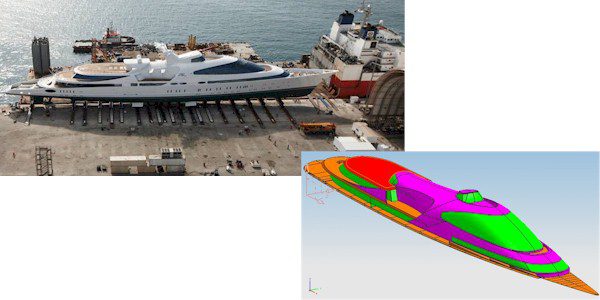
Trapezoidal Shear Webs 3
Compmillennia produced 11 transverse panels, measuring 8-ft by 39-ft, which were shipped to Abu Dhabi (can be seen on previous slides laid out on ground) and assembled on-site into the finished helideck.
